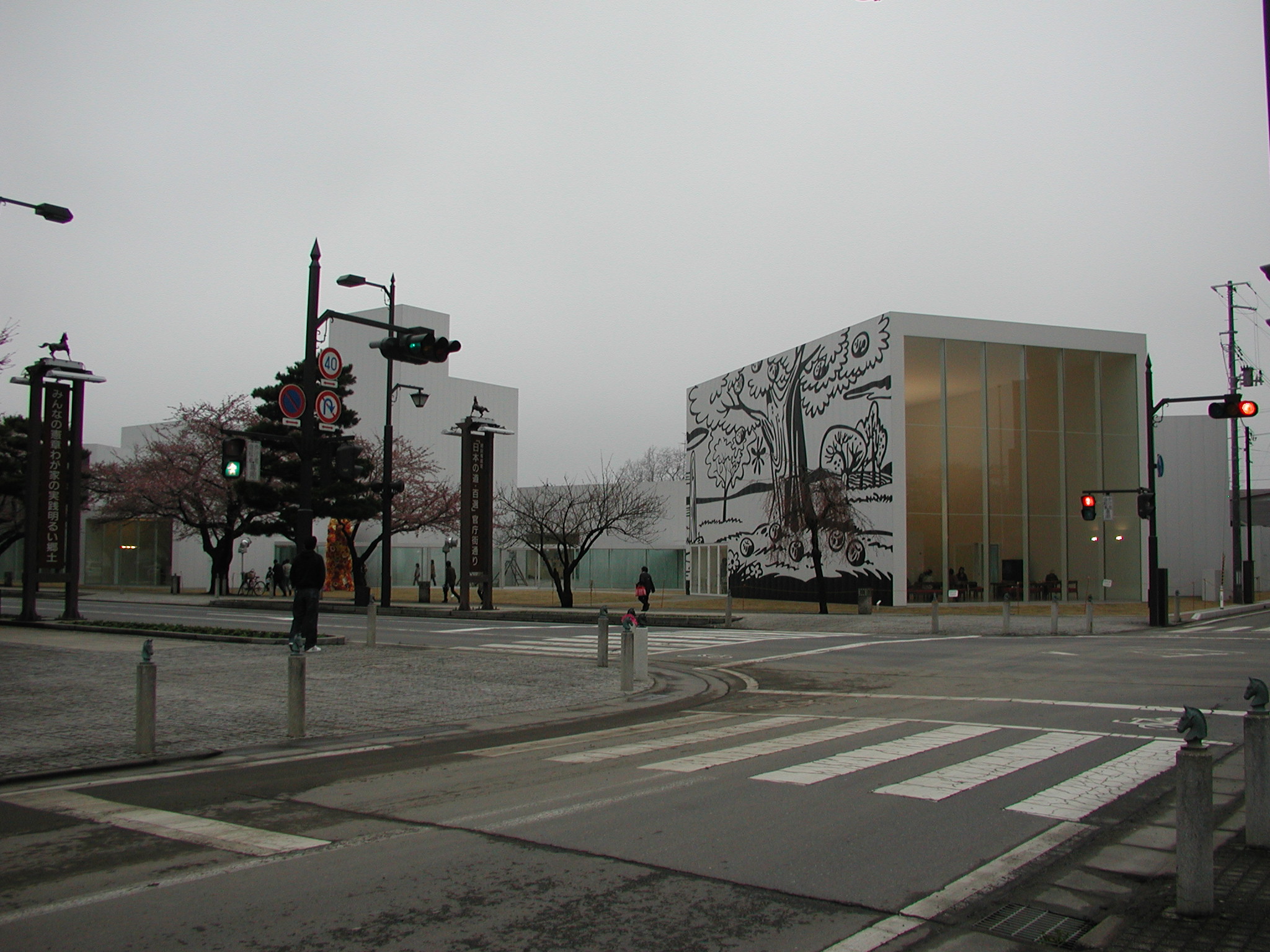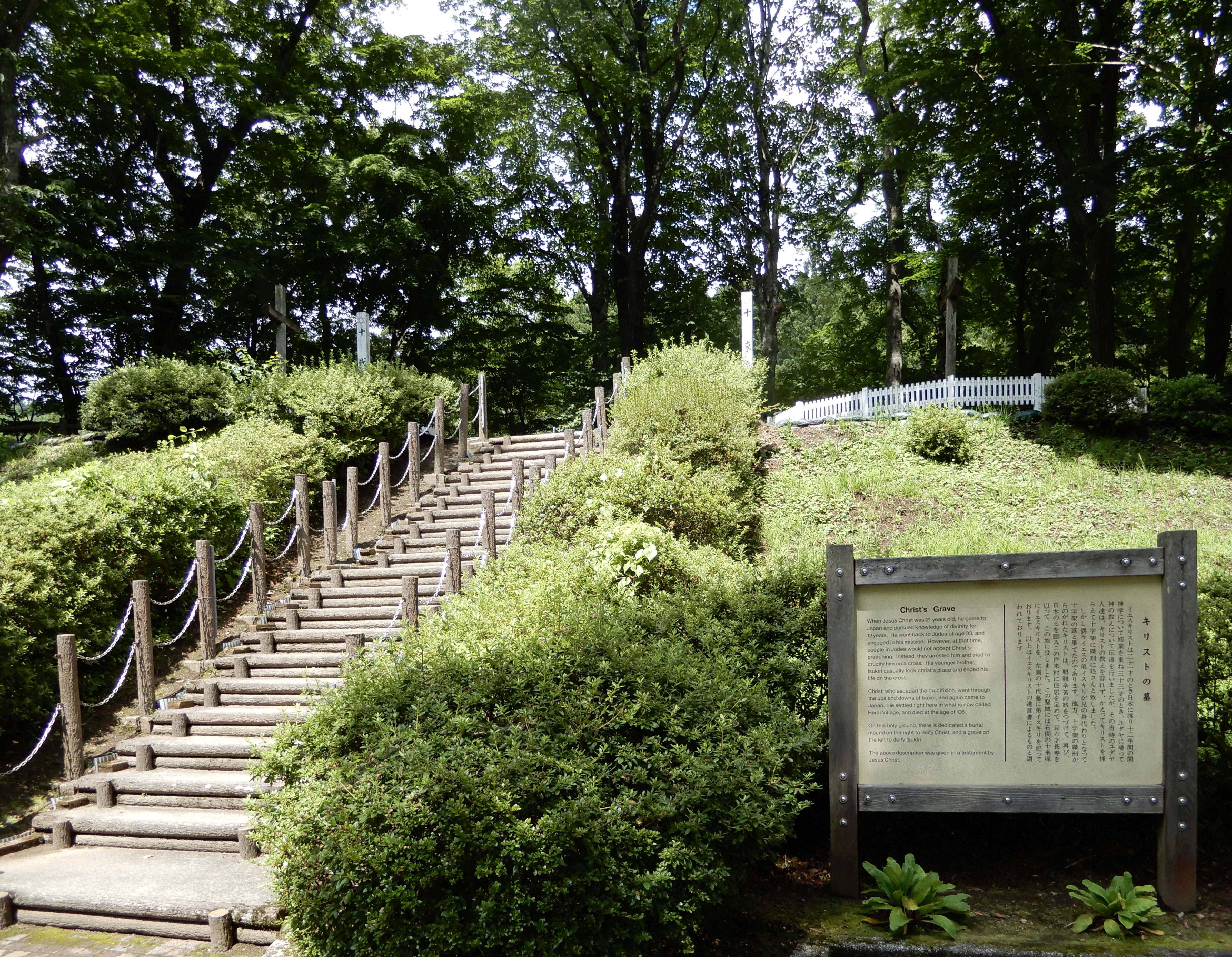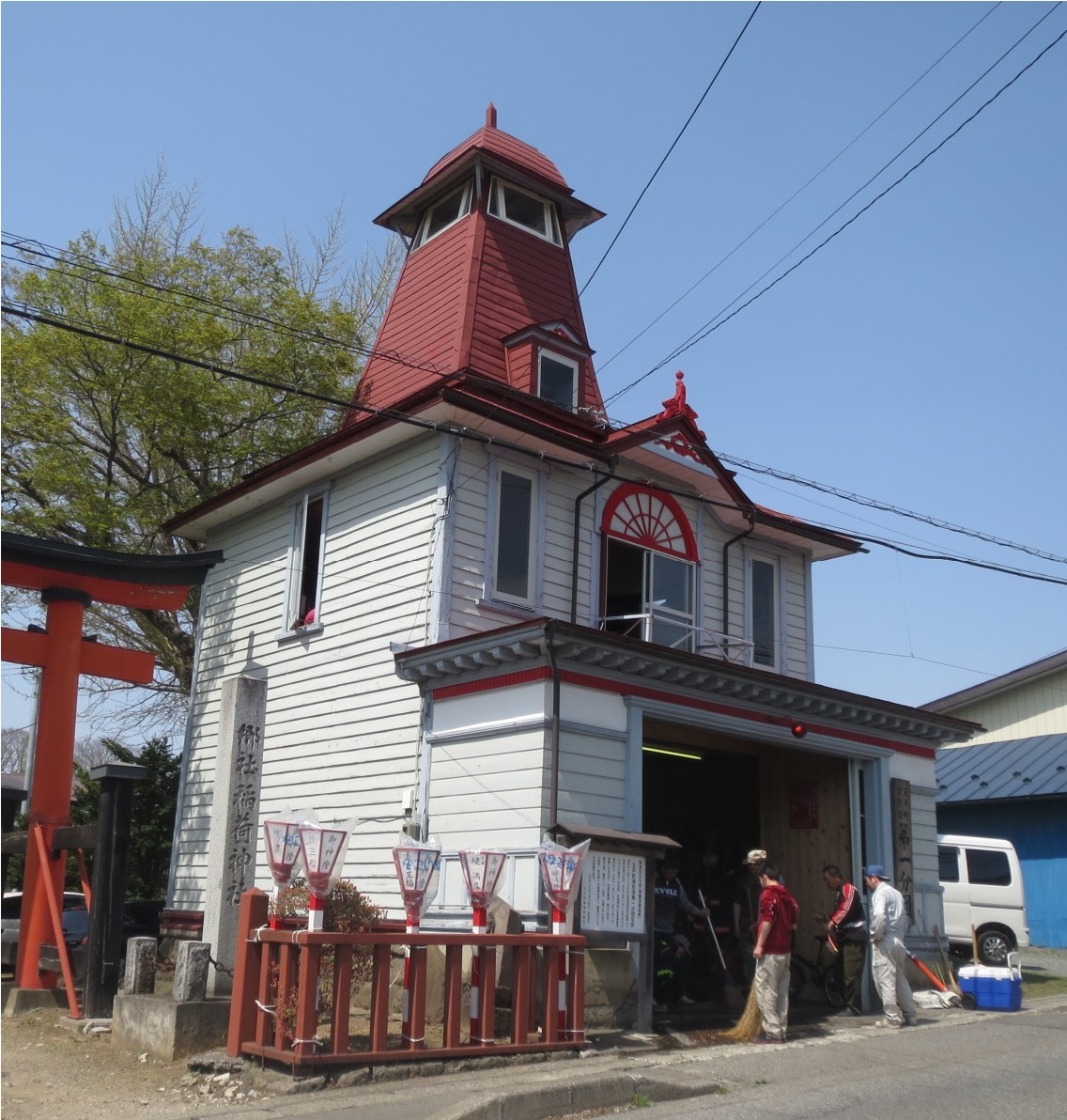|
Towada
is a city in Aomori Prefecture, Japan. , the city had an estimated population of 60,697, and a population density of 84 persons per km2 in 27,677 households. The total area of the city is . Geography Towada is in the foothills of the Hakkōda Mountains and encompasses the Aomori portion of Lake Towada. The Oirase River passes through the town. Towada is an area rich in nature. To the west are Towada-Hachimantai National Park. In particular, Lake Towada and the Oirase River are famous tourist spots. As for industry, agriculture is thriving, and the city produces the largest amount of garlic in Japan. The central part of the city is characterized by its orderly grid-like streets. In particular, "Government Office Street" is a popular place for citizens to enjoy the Someiyoshino (Japanese cherry) trees planted along the street. In recent years, the city has been promoting its urban policy as a "Arts Towada," with the Towada Art Center (Art museum) as its centerpiece. Towada is h ... [...More Info...] [...Related Items...] OR: [Wikipedia] [Google] [Baidu] |
Lake Towada
is the largest crater lake in Honshū island, Japan. Located on the border between Aomori and Akita prefectures, it lies 400 meters (1,800 ft) above sea level and is 327 m (1,073 ft) deep, drained by the Oirase river. With a surface area of 61.1 km², Towada is Japan's 12th largest lake, its bright blue color is due to its great depth. The lake is roughly circular, with two peninsulas extending from its southern shore approximately one-third into the center of the lake. The lake is a popular tourist destination. Location Lake Towada is located approximately northeast of Tokyo, divided between the municipalities of Towada, Aomori and Kosaka, Akita. It forms part of the northern section of Towada-Hachimantai National Park Geology Lake Towada occupies the caldera of a stratovolcano still regarded as an active volcano. This volcano became active around 200,000 years ago, and through repeated eruptions and pyroclastic flows, especially 55,000 and 36,000 an ... [...More Info...] [...Related Items...] OR: [Wikipedia] [Google] [Baidu] |
Hakkōda Mountains
The are an active volcanic complex in south-central Aomori Prefecture, Japan, in Towada-Hachimantai National Park. Often called or simply , the mountains are collectively listed as one of the 100 Famous Japanese Mountains. Its highest peak, Mount Ōdake, lies southeast of central Aomori and west of central Towada and has an elevation of . The Hakkōda Mountains are a part Ōu Mountains which make up part of the Northeastern Japan Arc, a segment of the Pacific Ring of Fire. The volcanic complex consists of fourteen stratovolcanoes and lava domes arranged into two volcanic groups. The Northern Hakkōda Volcanic Group emerges from the rim of an caldera that dates back to the Pleistocene. The Southern Hakkōda Volcanic Group predates the caldera. The Hakkōda Mountains attract many climbers, skiers, and sightseers. The mountains offer extensive backcountry skiing in the winter and early spring. There is a lift, the Hakkōda Ropeway in the northern Hakkōda Mountains used by v ... [...More Info...] [...Related Items...] OR: [Wikipedia] [Google] [Baidu] |
Aomori Prefecture
is a prefecture of Japan in the Tōhoku region. The prefecture's capital, largest city, and namesake is the city of Aomori. Aomori is the northernmost prefecture on Japan's main island, Honshu, and is bordered by the Pacific Ocean to the east, Iwate Prefecture to the southeast, Akita Prefecture to the southwest, the Sea of Japan to the west, and Hokkaido across the Tsugaru Strait to the north. Aomori Prefecture is the 8th-largest prefecture, with an area of , and the 31st-most populous prefecture, with more than 1.2 million people. Approximately 45 percent of Aomori Prefecture's residents live in its two core cities, Aomori and Hachinohe, which lie on coastal plains. The majority of the prefecture is covered in forested mountain ranges, with population centers occupying valleys and plains. Aomori is the third-most populous prefecture in the Tōhoku region, after Miyagi Prefecture and Fukushima Prefecture. Mount Iwaki, an active stratovolcano, is the prefecture's highest p ... [...More Info...] [...Related Items...] OR: [Wikipedia] [Google] [Baidu] |
Towada-Hachimantai National Park
is a national park comprising two separate areas of Aomori, Iwate, and Akita Prefectures, Japan. The Towada-Hakkōda area encompasses Lake Towada, Mount Hakkōda, and most of the Oirase River valley. The Hachimantai area includes Mount Hachimantai, Mount Iwate, Tamagawa Onsen, and . The two areas are apart, and cover . Related municipalities * Aomori: Aomori, Hirakawa, Kuroishi, Towada * Iwate: Hachimantai, Shizukuishi, Takizawa * Akita: Kazuno, Kosaka, Semboku See also *List of national parks of Japan References External links **Towada-Hachimantai National Park(JNTO The , JNTO, provides information about Japan to promote travel to and in the country. It was established in 1964 and its headquarters are in Yotsuya, Shinjuku-ku, Tokyo. The JNTO operates Tourist Information Centers (TICs) as well as a website ...) *Towada-Hachimantai National ParkMap of Towada-Hachimantai National Park (area 1)Map of Towada-Hachimantai National Park (area 2)* National p ... [...More Info...] [...Related Items...] OR: [Wikipedia] [Google] [Baidu] |
Kamikita District, Aomori
is a Districts of Japan, district located in Aomori Prefecture, Japan. It occupies the east-central portion of the prefecture, south of Shimokita Peninsula. As of 2010, the district has an estimated population of 100,526 and a population density, density of 78.5 persons per km2. The total area was 1281.05 km2. In terms of national politics, the district is represented in the Diet of Japan's House of Representatives of Japan, House of Representatives as a part of the Aomori 1st district and the Aomori 2nd district. Towns and villages The district currently consists of six towns and one village. The cities of Towada, Aomori, Towada and Misawa, Aomori, Misawa were formerly part of the district. *Noheji, Aomori, Noheji *Oirase, Aomori, Oirase *Rokunohe, Aomori, Rokunohe *Shichinohe, Aomori, Shichinohe *Tōhoku, Aomori, Tōhoku *Yokohama, Aomori, Yokohama *Rokkasho, Aomori, Rokkasho History Kamikita District was part of ancient , established by the Northern Fujiwara. During the ... [...More Info...] [...Related Items...] OR: [Wikipedia] [Google] [Baidu] |
Towada Art Center
The is an art museum in Towada, Aomori Prefecture, Japan. The museum was opened in 2008 as part of the Arts Towada Project, in an effort to revitalize the city. It features works from artists both inside and outside of Japan, including Yoko Ono, Yoshitomo Nara is a Japanese artist. He lives and works in Nasushiobara, Tochigi Prefecture, though his artwork has been exhibited worldwide. Nara has had nearly 40 solo exhibitions since 1984. His art work has been housed at the MoMA and the Los Angeles Coun ..., and Jeong-Hwa Choi. References External links * Official website Art museums established in 2008 2008 establishments in Japan Towada, Aomori Museums in Aomori Prefecture Art museums and galleries in Aomori Prefecture {{Japan-art-display-stub ... [...More Info...] [...Related Items...] OR: [Wikipedia] [Google] [Baidu] |
Oirase River
The is a river located in eastern Aomori Prefecture, in the Tōhoku region of northern Japan. __NOTOC__ The Oirase River is the only river that drains Lake Towada, a large caldera lake that lies on the border of Aomori and Akita Prefectures. The river flows in a generally eastern direction, through the municipalities of Towada, Rokunohe, Oirase, and Hachinohe before exiting into the Pacific Ocean. The upper reaches of the river form a scenic gorge with numerous rapids and waterfalls, and is one of the major tourist attractions of the Towada-Hachimantai National Park is a national park comprising two separate areas of Aomori, Iwate, and Akita Prefectures, Japan. The Towada-Hakkōda area encompasses Lake Towada, Mount Hakkōda, and most of the Oirase River valley. The Hachimantai area includes Mount Hachim .... The lower reaches of the river are used extensively for irrigation. In 1996 the sound of flowing water at the Oirase River was selected by the Ministry of the Envir ... [...More Info...] [...Related Items...] OR: [Wikipedia] [Google] [Baidu] |
Shingō, Aomori
is a village located in Aomori Prefecture, Japan. , the village has an estimated population of 2,408 in 922 households and a population density of 16 persons per km² (42 people per square mile). The total area of the village is . Geography Shingō is in south-central Aomori Prefecture, east of Lake Towada. The western edge of the village borders Akita Prefecture. Much of the village is mountainous with the outer ring mountains of Lake Towada, including Mt. Okomagatake () and Mt. Toraidake (). The village area extends along National Route 454, which connects Hachinohe, Aomori Prefecture and Lake Towada. Neighboring municipalities *Aomori Prefecture **Towada ** Sannohe District ***Gonohe *** Nanbu ***Sannohe *Akita Prefecture **Kazuno Climate The village has a cold humid continental climate characterized by cool short summers and long cold winters with very heavy snowfall (Köppen climate classification ''Dfa''). The average annual temperature in Shingō is . The average annual ... [...More Info...] [...Related Items...] OR: [Wikipedia] [Google] [Baidu] |
Gonohe, Aomori
is a town located in Aomori Prefecture, Japan. , the town had an estimated population of 16,880, and a population density of 95 persons per km2 in 7,006 households. The total area of the town is . Geography Gonohe is located in the north-eastern part of Sannohe District, approximately 16 kilometres west of Hachinohe City and 10 kilometres southeast of Towada City. The town is adjacent to Hachinohe City to the east, Shingō Village to the west, Nanbu Town to the south, and Towada City, Oirase Town and Rokunohe Town to the north. The land extends 16.8 kilometres east to west and 18.55 kilometres north to south. The Gonohegawa River, which flows from Mt. Heraidake into the Pacific Ocean, and the Asamizugawa River, which originates from a hot spring swamp to join the Mabechi River, run parallel to each other through the town. While embracing these two rivers, residential areas have formed, and rice fields can be found in the flat areas that benefit from the favourable flows o ... [...More Info...] [...Related Items...] OR: [Wikipedia] [Google] [Baidu] |
Tōhoku Region
The , Northeast region, or consists of the northeastern portion of Honshu, the largest island of Japan. This traditional region consists of six prefectures (''ken''): Akita, Aomori, Fukushima, Iwate, Miyagi, and Yamagata. Tōhoku retains a reputation as a remote, scenic region with a harsh climate. In the 20th century, tourism became a major industry in the Tōhoku region. History Ancient & Classical period In mythological times, the area was known as Azuma (吾妻, あづま) and corresponded to the area of Honshu occupied by the native Emishi and Ainu. The area was historically the Dewa and the Michinoku regions, a term first recorded in (654). There is some variation in modern usage of the term "Michinoku". Tōhoku's initial historical settlement occurred between the seventh and ninth centuries, well after Japanese civilization and culture had become firmly established in central and southwestern Japan. The last stronghold of the indigenous Emishi on Honshu and ... [...More Info...] [...Related Items...] OR: [Wikipedia] [Google] [Baidu] |
Shichinohe, Aomori
is a town located in Aomori Prefecture, Japan. , the town had an estimated population of 15,286, and a population density of 45 persons per km2, in 6,797 households. The total area of the town is . Geography Shichinohe is in central Aomori Prefecture, to the east of the Hakkōda Mountains. Neighboring municipalities Aomori Prefecture *Aomori *Towada * Tōhoku *Hiranai Climate The town has a cold humid climate characterized by cool, short summers and long, cold winters with heavy snowfall (Köppen climate classification ''Cfa''). The average annual temperature in Shichinohe is 9.8 °C. The average annual rainfall is 1233 mm with September as the wettest month. The temperatures are highest on average in August, at around 22.8 °C, and lowest in January, at around -2.1 °C. Demographics Per Japanese census data, the population of Shichinohe peaked around 1960 and has declined over the past 60 years. History Shichinohe began as one of a series of numbered fo ... [...More Info...] [...Related Items...] OR: [Wikipedia] [Google] [Baidu] |
Aomori (city)
is the capital city of Aomori Prefecture, in the Tōhoku region of Japan. , the city had an estimated population of 278,964 in 136,457 households, and a population density of 340 people per square kilometer spread over the city's total area of . Aomori is one of Japan's 60 core cities and the core of the Aomori metropolitan area. History ''Aomori'' literally means blue forest, although it could possibly be translated as "green forest". The name is generally considered to refer to a small forest on a hill which existed near the town. This forest was often used by fishermen as a landmark. A different theory suggests the name might have been derived from the Ainu language. The area has been settled extensively since prehistoric times, and numerous Jōmon period sites have been found by archaeologists, the most famous being the Sannai-Maruyama Site located just southwest of the city center dating to 5500–4000 BC, and the Komakino Site slightly farther south dating to arou ... [...More Info...] [...Related Items...] OR: [Wikipedia] [Google] [Baidu] |
_(3800529489).jpg)






.png)